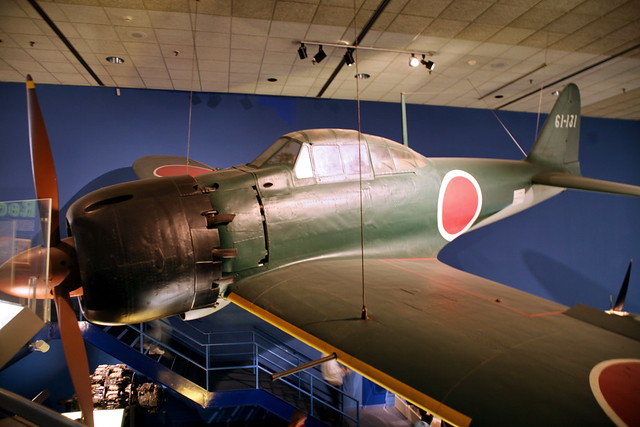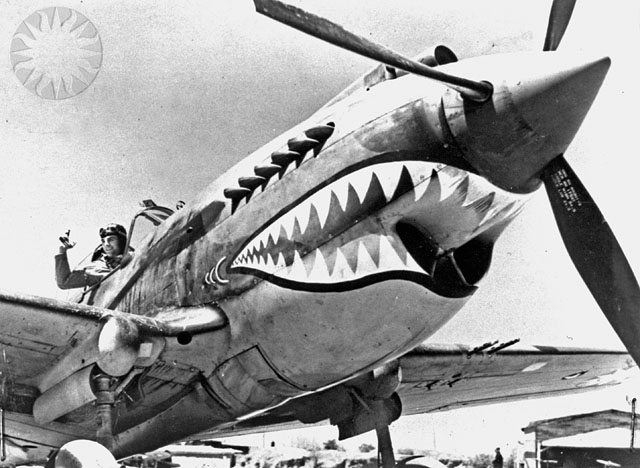I remember many years ago while working in the Aero-Propulsion Laboratory at Wright-Patterson, Air Force Base near Dayton, Ohio listening to a man telling war stories; real war stories – sit up in your chair and hang onto every word – war stories.
It was in the early 1990s. The audience was packed in like New York commuters on the Long Island Expressway. All the seats in the Air Force Museum Auditorium – that holds maybe 500 people- were filled. The back area was also filled; filled with standing onlookers; folks who arrived too late to get a seat.
The speaker had the audience in the palm of his hand. No he wasn’t a professional motivational speaker. No he wasn’t jumping up and down and modulating his voice like a Ginsu knife salesman. But, he had something a lot of speaker don’t have … he had something to say; he had a story to tell; he had a story that everyone in the packed auditorium wanted to hear.
You see, our speaker was a former pilot in an organization called “The Flying Tigers.” This is the group of american fighter pilots flying missions in China against he Japanese even before the United States entered World War Two.
I’ve forgotten his name. I’ve forgotten a lot of what he said. But, I remember enough to want to write about it. I remember enough to tell a lot of his story. And it’s a story worth retelling.
So, here’s my attempt to retell what I heard that wonderful evening at the Air Force Museum Auditorium from a real live “Flying Tiger.”
***
The Flying Tigers flew the P-40 Curtiss built fighter aircraft against the Japanese in China during World War Two. At first, the P-40 didn’t fare very well against the Japanese Zero. The kill ratio was horrendous. The Zero would annihilate the P-40 almost every time in a dogfight.
The performance was so bad, the Curtiss Aircraft executives got called on the carpet by Congress to explain why this american built fighter plane was no match for the Japanese built Zero.
The P-40 was an excellent aircraft. It just wasn’t as good in a dogfight as the highly maneuverable Zero. Every aircraft has strengths and weaknesses. The Curtis was sturdy, fast and stable. Stable is good, except in a dogfight. The Zero, on the other hand, was highly maneuverable, fast and light. Light is good, except when you get hit by enemy gunfire. The Zero was very vulnerable to a hit. If you could just hit the Zero once, you could most likely bring it down. But, to bring down the P-40, you had to hit it a lot; like the prizefighter who can take punches. But, just like the tough prizefighter, after so many hits, the legs give out, the gloves get too heavy and the crash to the canvas comes hard.
So, in a dogfight, the Zero was king. The Zero was way too maneuverable to hit; like trying to catch a fish with your bare hands. Very difficult. The maneuverability advantage allowed the Zero pilots to hammer the P-40s with round after round of aircraft destroying lead. And, after getting hit a lot, the P-40 – although sturdy – would crash and burn. It wasn’t a contest. Things looked grim. The P-40 pilots started losing confidence. To go up against the Zero in a traditional dogfight was starting to look like suicide.

And, this is the point where a hero comes onto the scene to save the day. He’s very famous in military aviation history. He’s famous for how he turned around the dismal Flying Tigers performance against the Zero.
His name?
Claire Chennault.
How did he do it? How did he turn the Flying Tigers from “the hunted” to “the hunters?”
Simple. He changed the rules.
What are the rules in war?
There are none. You make them up as you go along. Claire didn’t like the way the game was being played, so he simply changed the rules.
It’s amazing what can happen when you decide … to change the rules. Course, Claire didn’t share his rule changes with the Japanese; he simply implemented them immediately. And, when he did … the results changed. The tide turned and turned fast.
Here’s what Claire did …
First, he set up a network of Chinese forward observers. This network would give advance warning of when the Zeros were “on their way.”
Next, he instructed his pilots, “Never get into a dogfight with the Zero!”
Instead, the new tactic called for flying at high altitude and “when you spot the Zeros, make one diving run – with guns blazing – and then, Get the hell outta there!”
The Flying Tigers implemented Claire’s plan.
The results speak for themselves.
The kill ratio reversed; the P-40s were knocking the Zeros out of the sky like a bug zapper killing mosquitoes on a hot muggy August evening in Maine – no contest.
Here’s how it worked …
The forward Chinese observers would radio in that the Zeros were on their way. The Flying Tigers would take off and fly at the prescribed higher altitude. The Tigers already knew the flight path of the Zeros and would know when to expect to meet them. When they spotted the Zeros, the Tigers would dive down like an angry swarm of wasps spraying lead into the unsuspecting enemy aircraft. Before the Zeros could figure out “what just happened” the Flying Tigers were gone; they had left the scene.
And the scene was … devastation. The Zeros didn’t stand a chance; one hit and they were done. Just a glancing blow would most likely take out a Zero. The Zero couldn’t take a hit. Chennault figured out how to get hits on the Zero. His strategy/tactics worked; they worked brilliantly.
This is how the Flying Tigers achieved military aviation fame in China during World War Two. Once Chennault changed the rules of the game, the Zero never ruled the skies over China again.
NOTE: I just wrote this from memory; what I remember our guest telling us that evening. Please don’t site this as a definitive military history of the Flying Tigers. It’s not. It’s just my recollection of the story told that evening in Dayton, Ohio. And, I want it that way. I view this story as how I will tell it to my grandchildren. And, they’ll probably call me out right on the spot saying something like “… well, according to Google, the kill ratio was not the number you specified …” Oh, well, I miss the old days when a person could tell a story how he/she wanted to!
